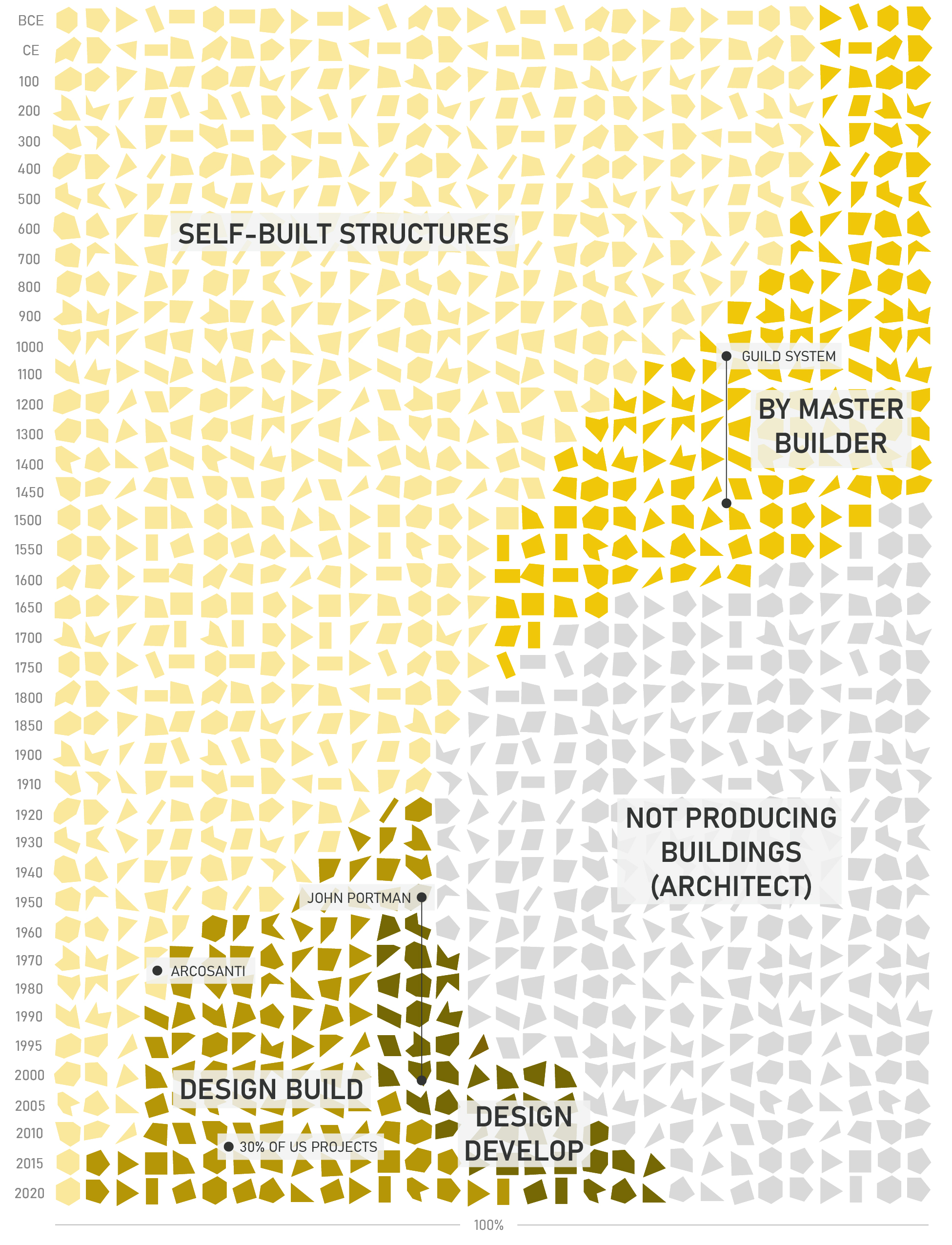Building Sub-Products over Time
BCE—900 CE
Throughout human history, most buildings have been self-built by their inhabitants. However, when larger structures of civic importance were developed in ancient cities, construction was managed by a master builder.
900—1450 While the guild system flourished in Europe, master masons traveled throughout regions, oftentimes moving from project to project before completion and taking up work started by others as funding became available.
1450—1700 The master mason begins to separate from the Renaissance Architect, an intellectual role distinct from labor which becomes formalized in this period.
1700—1900The role of the architect becomes fully separated from labor. Builders rely on drawings and on-site instruction from the architect. The rise of literacy and standardized mass production allows further separation of the architect and builders.
1900—1950 Architects and builders become recoupled under a single corporate umbrella of the design-build structure. Most of these companies are builder-led rather than architect-led, although both exist.
1950—1990 John Portman innovates the design-develop structure for building. The architect secures funding and proposes a project. Most firms in this category are developer-led rather than architect-led.
1990—2020 There is an explosion of design-build construction in the United States. The lack of liability gap between architect and builder makes this an attractive option for public projects and currently holds a large and growing market share.
BCE—900 CE
Throughout human history, most buildings have been self-built by their inhabitants. However, when larger structures of civic importance were developed in ancient cities, construction was managed by a master builder.
900—1450 While the guild system flourished in Europe, master masons traveled throughout regions, oftentimes moving from project to project before completion and taking up work started by others as funding became available.
1450—1700 The master mason begins to separate from the Renaissance Architect, an intellectual role distinct from labor which becomes formalized in this period.
1700—1900The role of the architect becomes fully separated from labor. Builders rely on drawings and on-site instruction from the architect. The rise of literacy and standardized mass production allows further separation of the architect and builders.
1900—1950 Architects and builders become recoupled under a single corporate umbrella of the design-build structure. Most of these companies are builder-led rather than architect-led, although both exist.
1950—1990 John Portman innovates the design-develop structure for building. The architect secures funding and proposes a project. Most firms in this category are developer-led rather than architect-led.
1990—2020 There is an explosion of design-build construction in the United States. The lack of liability gap between architect and builder makes this an attractive option for public projects and currently holds a large and growing market share.

